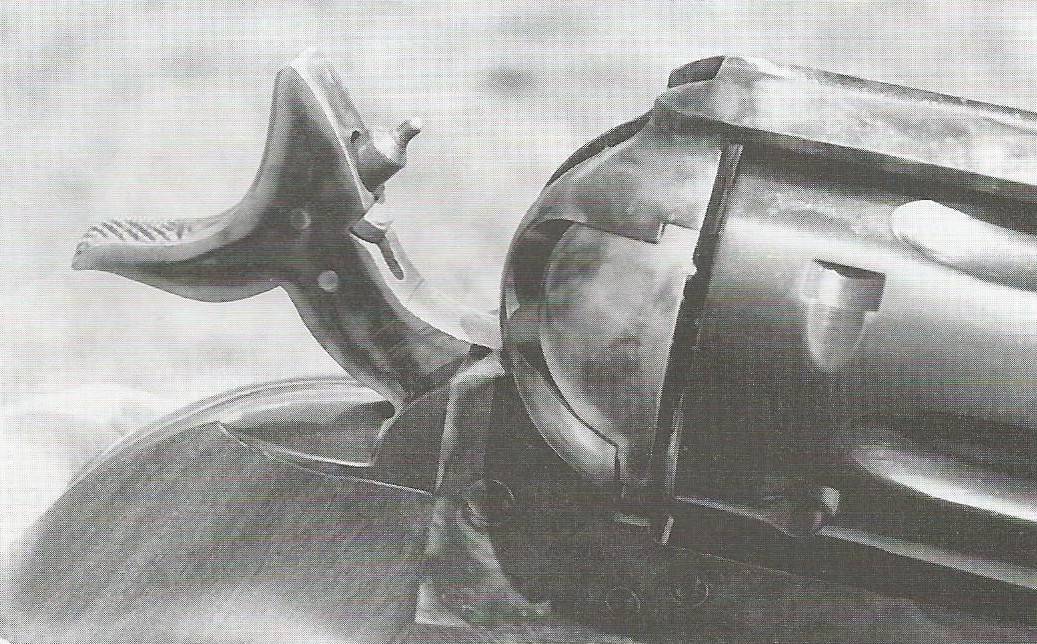Howdy
Over the years there have been various changes regarding hammer blocks in Smith and Wesson double action revolvers with side swinging cylinders. This is the lockwork of a 38 Military and Police 1st Model (Model of 1899). The mechanism is quite different from later S&W double action revolvers. Note the lack of a rebound slide. Notice too, there is no hammer block. All revolvers with side swinging cylinders must have a rebounding hammer, so the cylinder can be swung out without the firing pin getting stuck in a fired primer. In this photo the hammer is down in the 'at rest' position. It has been cammed back by the part below the hammer and the hammer is about 1/16" away from its stop on the frame. If the hammer spur were to be struck with a strong blow, it was possible for parts to break, allowing the firing pin to strike a primer in a loaded chamber. However this was relatively unlikely, this system was much more robust than the system used in the old Colt Single Action revolvers.
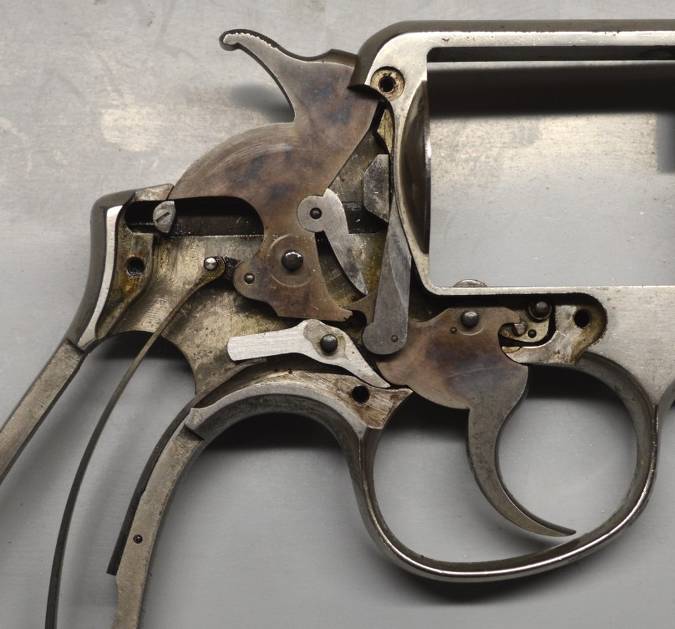
This is the mechanism from 38 M&P that left the factory around 1908. There is no hammer block. Note how the bump on top of the rebound slide has wedged the hammer back from the frame, pulling the firing pin back. A strong enough blow to the hammer spur could possibly break parts, allowing the firing pin to strike a cartridge under the hammer, but it was relatively unlikely to happen.
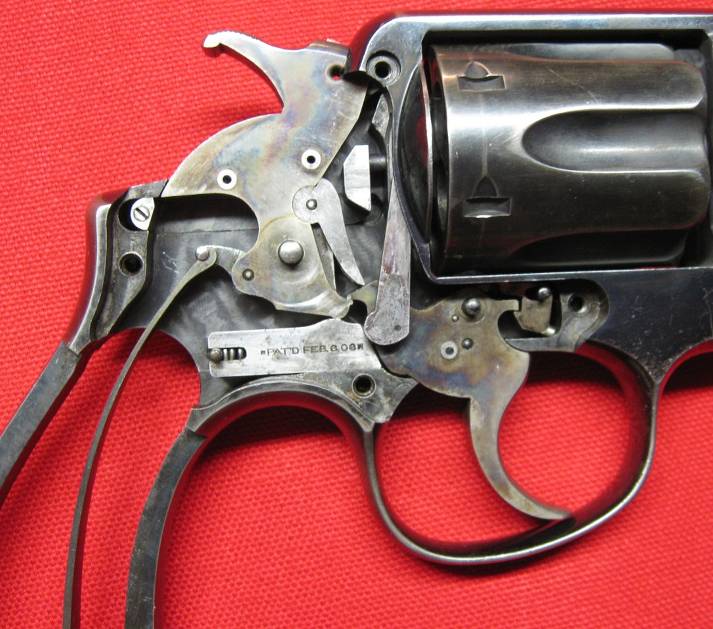
Over the years S&W has used three distinct styles of hammer blocks. This is the first type. I have positioned the hand in the slot it occupies in the side plate. The hammer block is a piece of spring steel, peened in place in the side plate. The rectangular tab at the top of the hammer block extends toward us in this photo. When at rest, the tab at the top of the hammer block rested between the hammer and the frame, preventing the hammer from going forward all the way. When the hand rose up, it pushed a spring loaded pin in. The pin in turn pushed the hammer block down into its slot, withdrawing the top tab from between the frame and the hammer, allowing the hammer to fall all the way. Sorry, I do not have an exact date for when this style of hammer block first showed up, but the revolver this side plate is off of shipped in 1920.
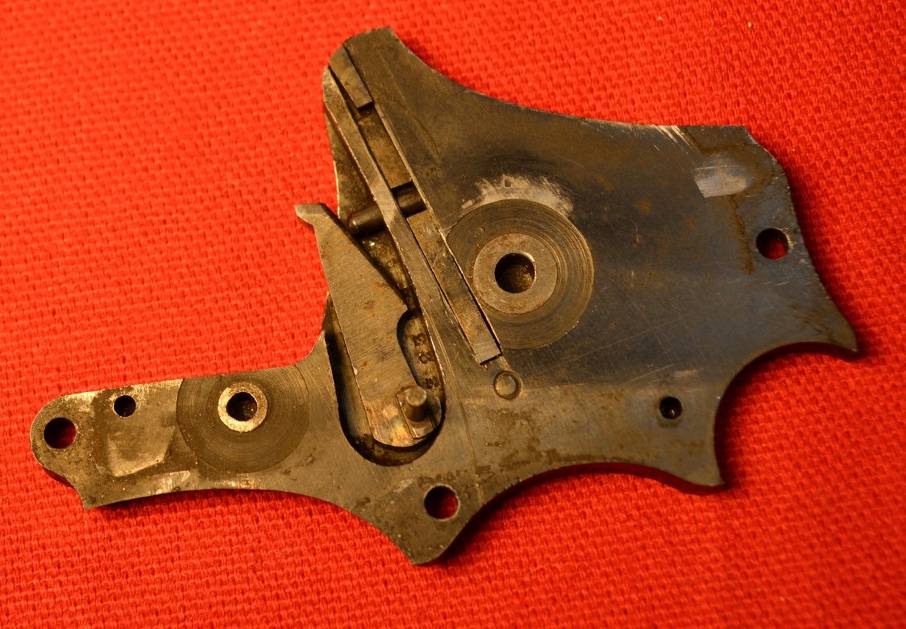
Smith and Wesson has always striven to reduce cost to manufacture. This is a later style of hammer block, with less parts. Again, the tab at the top of the hammer block was normally in position between the hammer and the frame. Notice the tab on the side of this hammer block. When the hand rose, the ramp on the backside of the hand engaged the tab on the side of the hammer block, pushing it down into its slot in the side plate, allowing the hammer to fall all the way.
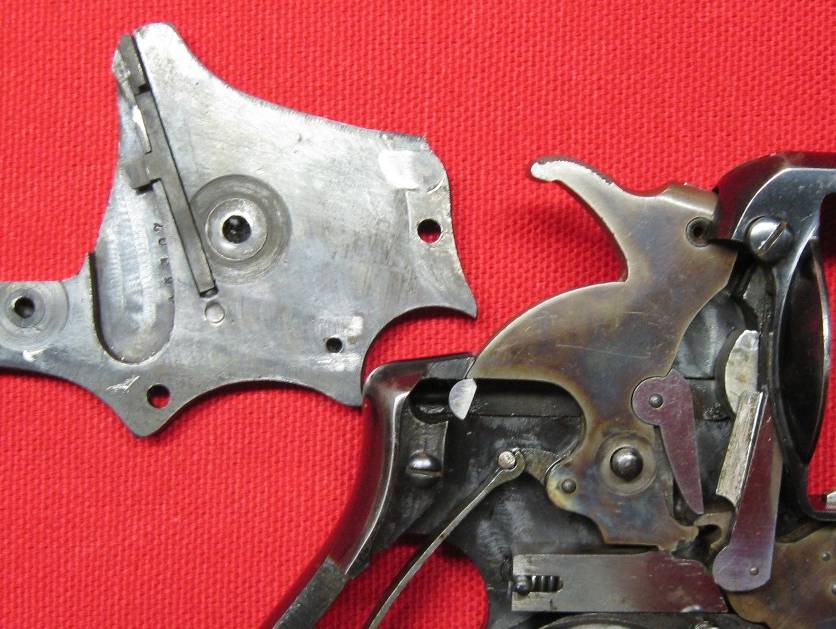
In 1944 (not 1945) a sailor was killed when a Victory Model Smith and Wesson fell to the deck of a warship. I have heard several versions of this story, but the most believable one I heard is that a pilot was climbing out of the cockpit of his plane on an aircraft carrier, and his revolver fell to the deck. If this version is true, the revolver would have fallen quite a distance as he climbed off the wing of his plane, and when it landed on its hammer it discharged, killing the sailor. An investigation found that hardened cosmoline had probably prevented the spring steel hammer block from moving forward to the 'safe' position, and the force had been enough to break enough parts and the revolver discharged. S&W was in danger of losing their lucrative contracts with the military, so all the engineers were called in, and within a week a new style of hammer block had been designed. The new hammer block is the thin, slanted piece of steel. I have positioned it as it sits in the revolver with the hammer down. It rides in a slot in the side plate. This hammer block is actually redundant. Notice the bump at the top of the rebound slide is keeping the hammer back away from the frame. The hammer block is resting in position, but the hammer is not touching it. There is a pin in the side of the rebound slide. When the rebound slide is pulled back, in either single action or double action mode, the pin will pull the hammer block down, allowing the hammer to fall all the way. This style of hammer block has been in every revolver S&W has made since 1944. All revolvers with this style of hammer block are completely safe to carry fully loaded. This particular 44 Hand Ejector 4th Model shipped in 1955.
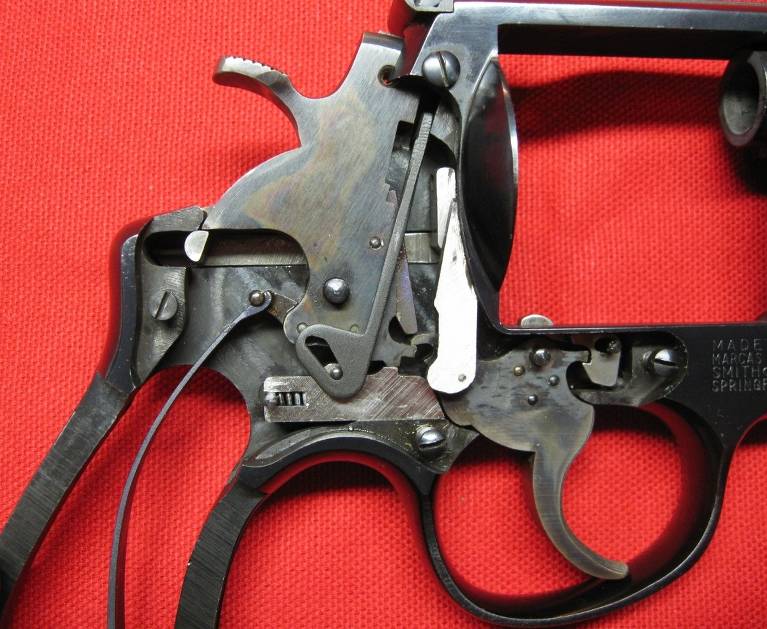
Colt patented the Positive Lock mechanism in 1905. A hammer block prevented the hammer from falling all the way until the trigger was pulled or the hammer cocked. The arrow is pointing to the hammer block in this Colt Detective Special that shipped in 1934.
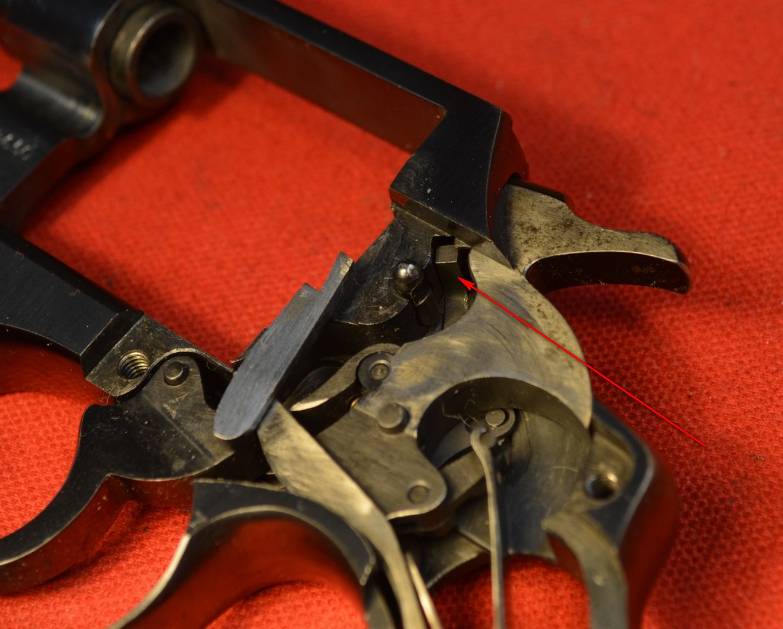
While I'm at it, these are the lockwork parts of a 2nd Gen Colt Single Action Army. The lower arrow is pointing to the sear, the tip of the trigger. The upper arrow is pointing to the so called 'safety cock' notch on the hammer. First, notice how thin the tip of the sear is. Next notice the overhanging lip on the 'safety cock' notch. If the sear is resting in the 'safety cock' notch, it would not take much of a blow to the hammer spur to snap off the sear and allow the hammer to fall, firing a round under the hammer. Anyone who is familiar with these revolvers knows to NEVER carry it fully loaded with six rounds, but to ALWAYS keep an empty chamber under the hammer. The parts of all three generations of Colts, 1st, 2nd, and 3rd share these features, none are made with any sort of hammer block. This system is considerably more fragile than any of the designs by Smith and Wesson. Yes, some Italian replicas of Colts were imported with a two position cylinder base pin. This was done so they could be imported. The idea is if the pin is in the rear position, it will block the hammer from falling. Not a practical safety device, one will not want to stop and pull the pin forward if one is suddenly confronted by bad guys.
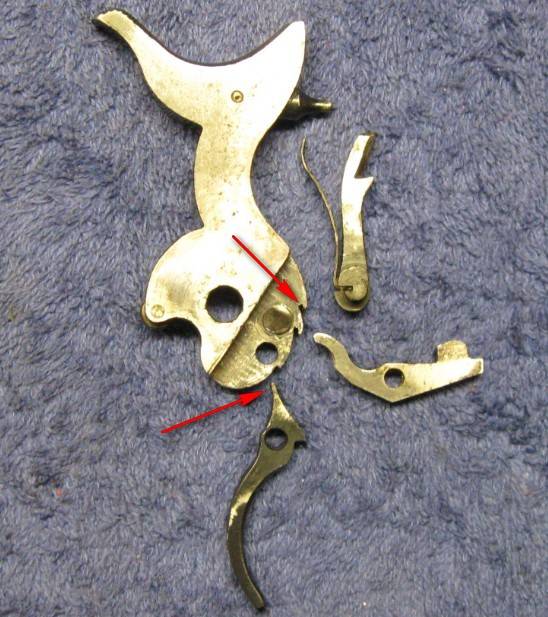
This is a photo of a style of hammer block that Uberti was using on their imported revolvers a bunch of years ago. The part below the firing pin actuated a hammer block at the bottom of the hammer that prevented the hammer from falling all the way unless the trigger was pulled.
Since the mid 1970s all Ruger revolvers have had a Transfer Bar, not a hammer block. The transfer bar transfers the blow of the hammer to the frame mounted firing pin. These revolvers are completely safe to carry fully loaded, whereas the older Three Screw Rugers are not. They do not have a hammer block or transfer bar, and can discharge if the hammer spur is struck by a heavy blow. Just like a Colt, the old Three Screw Rugers must never be carried fully loaded.
I have very little experience with the new Uberits, the ones with the floating hammer. The idea is they should be safe to carry fully loaded. However I was shooting one a few years ago and it did not fire every time I pulled the trigger. Probably a burr or something inside was preventing the firing pin from moving forward all the way.









